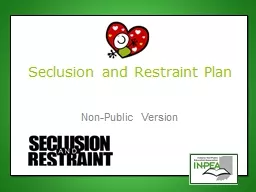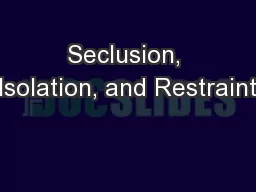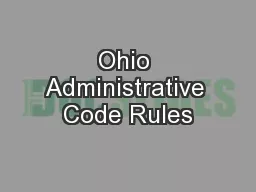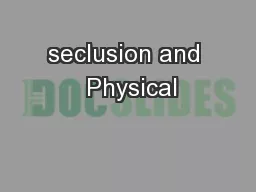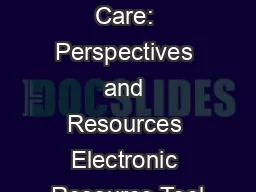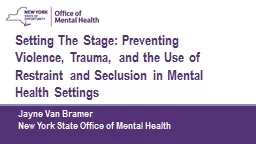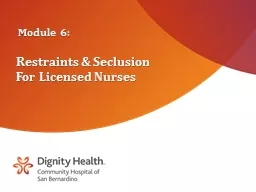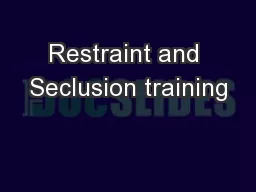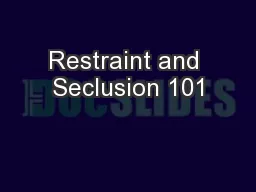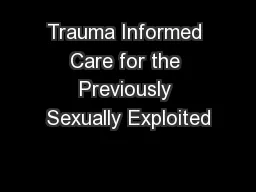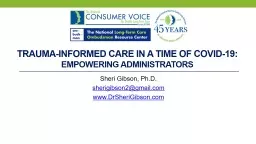PPT-Trauma-Informed Care: Positive Alternatives to Seclusion & Restraint
Author : giovanna-bartolotta | Published Date : 2019-06-19
How to Work Effectively Collectively and Kindly Towards Improving Outcomes for the Persons We Serve Executive Directors Meeting October 17 2012 Note This presentation
Presentation Embed Code
Download Presentation
Download Presentation The PPT/PDF document "Trauma-Informed Care: Positive Alternati..." is the property of its rightful owner. Permission is granted to download and print the materials on this website for personal, non-commercial use only, and to display it on your personal computer provided you do not modify the materials and that you retain all copyright notices contained in the materials. By downloading content from our website, you accept the terms of this agreement.
Trauma-Informed Care: Positive Alternatives to Seclusion & Restraint: Transcript
Download Rules Of Document
"Trauma-Informed Care: Positive Alternatives to Seclusion & Restraint"The content belongs to its owner. You may download and print it for personal use, without modification, and keep all copyright notices. By downloading, you agree to these terms.
Related Documents


